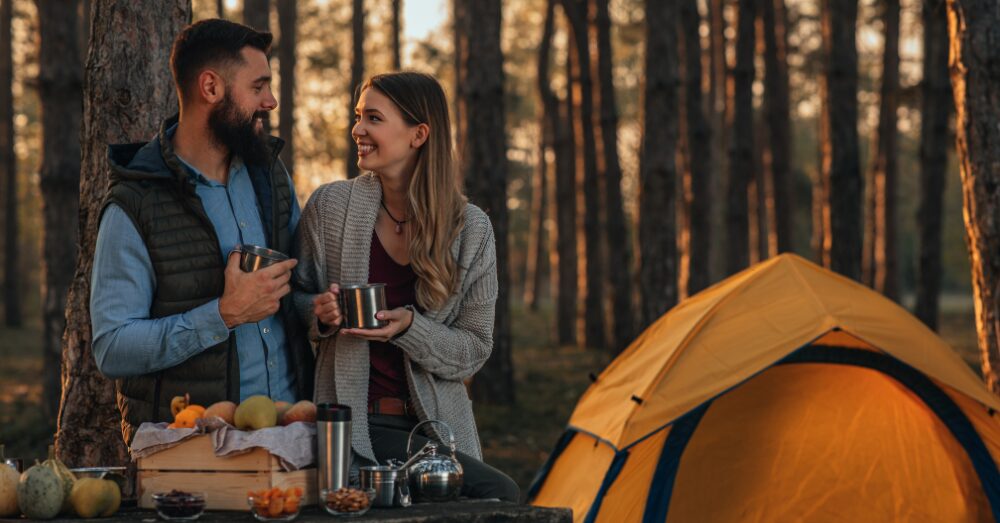Cool nights, clear skies, and fewer crowds make fall the perfect time to camp in Kentucky. With 31 state park campgrounds scattered across the state, you can wake up to brilliant foliage, enjoy crisp morning hikes, and gather around evening campfires without battling summer heat or bugs. Getting your gear ready now means you’ll spend less time packing and more time enjoying those weekend getaways before winter arrives.
- Kentucky offers 31 state park campgrounds with full amenities and year-round access, plus many stay open through the cooler months with reduced entrance fees after Labor Day.
- Fall camping requires layered clothing, a cold-rated sleeping bag, and proper moisture management since temperatures can drop 20-30 degrees from day to night.
- Vehicles with good cargo space and off-road capability make weekend camping trips easier, letting you pack all your gear and reach remote campsites on dirt roads.
Why Fall Camping Works
The weather cools down, leaves turn brilliant shades of orange and red, and those summer crowds disappear. You can actually get a campsite at popular spots like Cumberland Falls or Cave Run Lake without booking months ahead. Plus, bugs mostly vanish once temperatures drop, so you can skip the constant battle with mosquitoes and enjoy your meals in peace.
State parks across Kentucky keep most campgrounds open through fall, and many drop their entrance fees after Labor Day. That means better prices for the same great spots. The shorter days do mean you need to arrive earlier to set up camp before dark, but cooler temperatures make physical work like pitching tents and gathering firewood much more comfortable.
Pack Smart for Temperature Swings
Temperature swings catch people off guard in fall. A sunny 70-degree afternoon can turn into a 35-degree night, so packing smart matters. Start with a sleeping bag rated at least 10 degrees below the lowest temperature you expect. If you tend to get cold easily, go 20 degrees lower. Add a closed-cell foam pad or an insulated sleeping pad between you and the ground because the earth will suck heat right out of your body.
Layering your clothes works better than bringing one heavy jacket. Pack moisture-wicking base layers made from wool or synthetic fabrics. Cotton holds moisture and can make you colder, so leave those cotton shirts at home. Bring a fleece or wool mid-layer, a waterproof outer shell, warm socks, gloves, and a beanie. Toss in rain pants too, since fall weather changes fast.
Your tent needs a full rain fly and you should bring an extra tarp. Line your backpack with garbage bags to keep gear dry, and pack everything in waterproof stuff sacks. A headlamp with extra batteries becomes more important when sunset hits at 6:30 instead of 9:00. Cold drains battery power quickly, so bring backups.
Getting Your Vehicle Ready
Weekend camping trips mean hauling coolers, sleeping bags, tents, chairs, firewood, and all the extras that make camp comfortable. You need enough cargo space to fit everything without cramming gear on people’s laps. Four-door SUVs with fold-flat rear seats work well because you can configure the space based on how many people you’re bringing.
Some state park campgrounds sit at the end of dirt roads that get muddy after rain. Having a vehicle with decent ground clearance and four-wheel drive capability means you won’t get stuck or have to turn around. Models with removable roof panels let you enjoy those perfect fall days with open air. If you’re shopping around and live in the Bluegrass State, checking out a Ford Bronco for Sale Lexington, Kentucky gives you options that handle both highway drives and trail access with 35 cubic feet of cargo space in the four-door version.
Packing Your Cooler and Planning Meals
Skip the salads. Fall camping calls for hot meals that warm you from the inside. Chili, stews, and soups work great because you can prep them at home, then reheat at camp with minimal cleanup. Pack high-fat foods like nuts, cheese, and avocados since your body burns more calories staying warm in cooler weather.
Bring a camp stove as a backup even if you plan to cook over the fire. Wet weather can make campfires tough to start, and having a reliable way to heat water for coffee or cook breakfast saves frustration. Coffee that you can brew with just hot water beats instant packets. Dutch oven cooking also shines in fall since you can make everything from cornbread to apple cobbler right in the coals.
What to Do When You Get There
Check the weather forecast before you leave and monitor it during your trip if you have cell service. Wildlife becomes more active in fall during mating season, so store all food in bear-proof containers or your vehicle at night. Bring plenty of firewood since finding dry wood gets harder as the season progresses.
Plan activities that keep you moving during the day. Hiking, biking, or kayaking helps maintain your body temperature. Once the sun goes down and temperatures drop, gather around the campfire with a hot drink, play cards in the tent, or just enjoy the clear night sky. Fall offers some of the best stargazing since the air stays crisp and humidity drops.
Set up your tent in a spot that catches morning sun and has natural wind protection from trees or hills. Avoid low areas where cold air settles. Test all your gear at home before you go. Check tent zippers, make sure your sleeping bag is clean and lofted, and verify that your stove works properly.
Get Out There Before Winter
You’ve got a narrow window between summer heat and winter cold when camping feels perfect. Kentucky’s state parks offer everything from lakeside sites to mountain campgrounds, all within a few hours’ drive. Pack your layers, check your gear, and pick a weekend. The leaves won’t stay brilliant forever, and those quiet campsites fill up fast once word gets out about how good fall camping really is.

